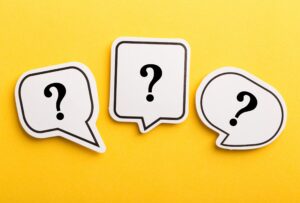
The social media platforms that have performed best – and admirably – during the coronavirus pandemic
When lockdown rules were imposed, we retreated in our droves, mentally and physically preparing ourselves for months of social isolation, away from family and friends.
One thing we could be thankful for during these turbulent times was the fact that we are now living in a technological age, where interaction is just a click away.
Social media has proved a godsend during the pandemic, with millions of us turning to our smartphones, laptops and tablets to stay in touch with our loved ones, seek solace and distract ourselves from the uncertain world outside.
Indeed, engagement on social apps has soared during the pandemic, with users logging in to consume news, share content, live stream, video call and mobilise communities.
Here, we look at how the social app giants reacted and adapted to the ‘new normal’ created by the coronavirus pandemic.
TikTok
The undisputed winner in lockdown has to be TikTok, with everyone from teens to baby boomers now acquainted with the video-sharing app.
The 15-second clip videos first gained popularity amongst teenagers, showing off their latest dance routines or pulling pranks, but TikTok came into its own during the pandemic, offering much-needed escapism to all the generations during a period of doom and gloom.
Although a relatively newcomer to the social space, in Q1 2020, TikTok generated the most downloads for any app ever in a quarter, accumulating more than 315 million installs, according to Sensor Tower.
TikTok is estimated to have now surpassed two billion lifetime downloads – a meteoric rise by any standard.
Rather than emulating the primped and preened content of Instagram, TikTok is about finding humour in the darkness and giving some light relief to both the creator and the viewer through absurd jokes, quirky dance moves and funny skits.
Unlike Instagram, with its emphasis on glamourous, envy-inducing luxe-living, TikTok can easily be filmed in a bedroom or in the garden – making it accessible and perfect for lockdown living.
Keen to take advantage of this video sharing trend, the UK government has jumped on the TikTok bandwagon, with health secretary Matt Hancock uploading TikTok videos urging people to stay at home and the leadership running health ads on the app.
There was also the #stayathomechallenge, where NHS workers and TikTok creators urged users to stay indoors and shared exercise routines or cooking tips to pass the time.
Although not primarily a source of news, the app has introduced a range of in-app features, notifications and safety measures specifically designed to elevate credible and accurate information from trusted sources. This demonstrates that although light humour sits at the core of the app, its creators take their responsibilities seriously and understand the impact of their influence.
It has been a bit of a mixed bag for Twitter.
According to Twitter’s Q1 2020 results, the platform saw a strong start to the year, with global monetizable Daily Active Users (mDAU) up 24 per cent from 134 million in the first quarter of 2019, to 166 million in Q1 2020. Total ad engagements increased by 25 per cent year-on-year.
However, coronavirus has hit Twitter’s ad revenues, with advertisers pulling back their spending as they brace for the pandemic’s financial fallout.
Twitter is famous for its ‘stream of consciousness’-style musings, which is arguably less relevant during this time of crisis and not in keeping with the public’s growing need for a sense of community.
The platform is also known for being a breeding ground for fake news and misinformation, and, with the sheer volume of real-time conversations being had, this can be hard to vet.
Twitter is taking action, however, and recently announced it would begin adding labels to some tweets to combat misinformation, beginning with tweets about the coronavirus pandemic but eventually about other topics.
Although tweets would not necessarily be taken down, users would be presented with verified information from the World Health Organization or other medical experts.
With its video functionality, Facebook was poised to do well during lockdown, with the brand holding its own against newer apps, such as Zoom and Houseparty.
At the beginning of lockdown, total messaging on Facebook and sister app Whatsapp increased by 50 per cent in some of the hardest hit regions, and video calling doubled in some markets.
However, as these services are not monetised, this uplift in engagement did not translate into increased revenue, and, like other businesses and platforms, Facebook was hit by a decrease in digital ad spend.
But as the dust settles, brands are starting to cautiously resume their advertising activities.
Facebook has been one of the social app giants to have adapted quickly to the changing situation and has leveraged its reputation as a community-driven platform during this time.
It also launched the Covid-19 Information Centre, which is an expanded adaptation of its ‘community help’ function.
The Information Centre prioritises conversations in the user’s general area, and includes local information on the real-time numbers of coronavirus cases and deaths, latest news on the virus, links to authoritative bodies’ websites and pages, and coronavirus prevention tips.
Community spirit and social responsibility are two positive things to have emerged from the pandemic and the platform’s ‘offer and request help’ function has helped to facilitate community action. Stickers and ‘empathy’ emojis also drive home that message of Facebook being a caring, community-minded platform.
The pandemic served as a sharp shock to many Instagram influencers, as brands pulled back on their sponsorship campaigns.
Sponsored posts on Instagram fell from representing 35 per cent of influencer content in mid-February to 4 per cent of creator content in mid-April, according to a report from the marketing-analytics firm Launchmetrics.
The reaction of some influencers to a drop in their revenue left a bad taste in many people’s mouths and reputations were somewhat tarnished, with an initial backlash against the ‘out-of-touch’ influencer culture.
Despite this, forced hibernation has meant that engagement has been climbing during the pandemic and the platform continues to perform well.
When it comes to stopping the spread of misinformation around coronavirus, Instagram is one of the most actively responsible platforms. As well as prioritising verified information from authoritative bodies, the platform is down-ranking posts and stories that have been flagged as false, removing non-credible accounts featuring coronavirus related content from recommendations, and banning misleading ads.
Stickers and hashtags have also been popular and helped to promote a sense of community and shared experience amongst the Instagram audience. These include the ‘Stay Home’ and ‘I Stay Home For’ stickers and hashtags, to encourage self-isolation and support health workers, and the ‘Support Small Business’ sticker, which helps to promote smaller businesses and encourages users to show their support by ‘shopping small and local’.
Where next?
Social media platforms may be a place of downtime and social interaction for the majority of us, but they are also large corporates with a responsibility to their investors and shareholders to stay afloat during this turbulent period.
Social media users can be fickle. These platforms have had to adapt quickly to keep the attention of their audience and not lose them to a more switched-on or forward-thinking competitor.
The new features and functions that have been developed gives us insight into how we, as a society, have been shaped by the pandemic, with our need for community, verifiable news, and sociability becoming ever stronger. Ultimately, it is a numbers game and by catering for the needs and wants of users, social media apps can hang on to their audience for that little while longer.




